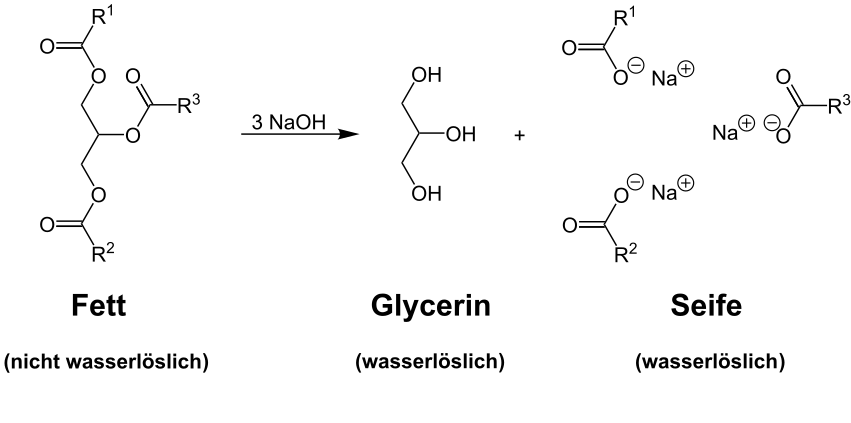Oven cleaner
Oven cleaners , also known as grill cleaners , are cleaning agents for removing burnt- in fat and leftover food stains in the oven and grill . The cleaners are usually strongly alkaline and contain additional fat-dissolving agents, such as B. Glycol ether to improve cleaning performance. Oven cleaners are offered in the form of sprays and gels. Oven cleaners can be used for cold and warm cleaning (approx. 50 ° C) depending on the product. The exposure time for warm cleaning is a few minutes. It is important to note that the oven or grill must not be switched on while the oven cleaner is being used. The exposure time for cold cleaning is significantly longer at a few hours. The gels and foams are very viscous (high viscosity ) and therefore adhere to vertical surfaces for long periods of time.
Mode of action
Most of the greasy impurities are converted into soap and glycerine through the reaction with the alkalis in the oven cleaner . The reaction between fats and alkalis is known as saponification . The products resulting from the saponification are water-soluble and can therefore be removed more easily. The fat-dissolving agents help to ensure that fatty residues can be removed more easily. The reaction between fat and alkalis, in this example sodium hydroxide solution ( NaOH ), can be illustrated by the following reaction scheme:
The products of the reaction glycerine and soap dissolve better in the oven cleaner and the water that is used to remove the oven cleaner. In this way, the burnt-in fat residue can be loosened and removed.
ingredients
The composition of oven cleaners varies from manufacturer to manufacturer. Oven cleaners typically contain the ingredients listed in the table:
| ingredient | function |
|---|---|
| Anionic and nonionic surfactants | Surface wetting and possibly foaming |
| Alkalis such as B. caustic soda or mono- / triethanolamine | Saponification of fats and swelling of impurities |
| Solvents such as B. glycol ethers | Improved solving of dirt |
| Thickeners such as B. carboxymethyl cellulose | Increase in viscosity |
| Perfume oil | odor |
Security aspects
As oven cleaners are usually very alkaline and can therefore be very corrosive, skin contact should be avoided. Before use, the label and the warnings should be carefully studied. Particular caution applies to concentrated products. In addition, it should be noted that sprays can contain flammable propellants such as butane . Therefore, no hot surfaces should be processed with the oven cleaner.
Individual evidence
- ↑ a b c Hauthal, Hermann G .: Cleaning and care products in the household: chemistry, application, ecology and consumer safety . Verlag für Chemische Industrie Ziolkowsky, Augsburg 2003, ISBN 3-87846-230-1 , p. 14 u. 203 ff .
- ↑ Entry on oven cleaner. In: Römpp Online . Georg Thieme Verlag, accessed on June 4, 2020.





